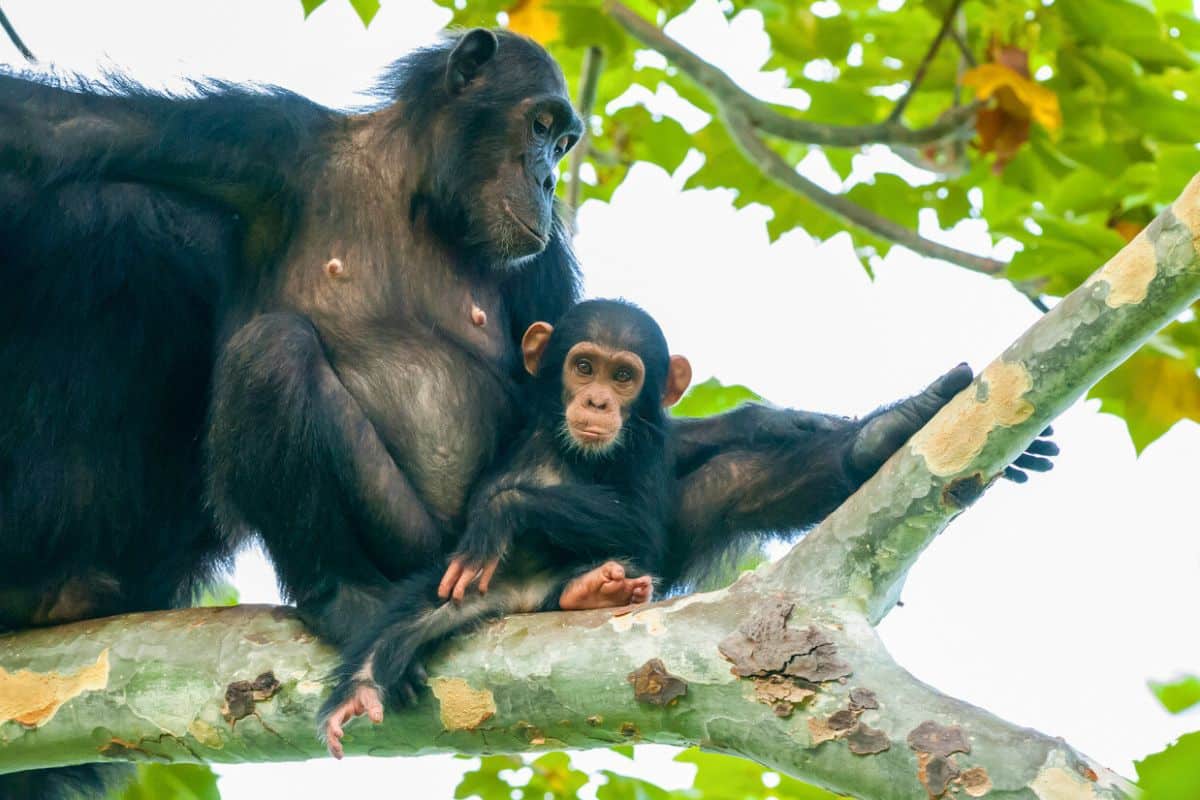Chimpanzees, our closest cousins in the animal kingdom, have long been studied for their social behavior, tool use and group interactions. But a new study has just opened up a fascinating window onto a much less explored aspect of their lives: cumulative culture. This groundbreaking work shows that, just as in humans, chimpanzees are capable of transmitting complex behaviors across generations in a structured way. Even more surprising, this cultural transmission may be closely tied to the migrations of female chimpanzees.
Cumulative culture in chimpanzees
Cumulative culture is a remarkable phenomenon: it refers to a species’ ability to build up knowledge and skills over time, with ideas and practices becoming more complex and refined from one generation to the next. In humans, cumulative culture underpins our technological and scientific progress. Our ancestors passed down knowledge and inventions, allowing each new generation to build on what came before. This capacity is not unique to our species, but it has been very hard to demonstrate clearly in other animals.
A recent study focused on chimpanzee culture and how it is transmitted. The idea of culture in chimpanzees is not new – researchers have known for years that these primates use tools. The key questions, however, were: how do these behaviors spread within groups? And more importantly, why do some chimpanzee communities develop more complex behaviors than others?
One of the important findings of the study was the identification of more complex behaviors in certain chimpanzee groups, such as using multiple tools in combination (for example, sticks to fish for termites or stones to crack nuts). These behaviors do not seem to appear spontaneously; they require intergenerational transmission and continual refinement.
In other words, just as in humans, chimpanzee behaviors are not simply copied and repeated; they accumulate and become more complex over time. This means that chimpanzees can build on the discoveries of their predecessors, creating more sophisticated tools and behaviors as generations pass.
The importance of females and their migrations
Female chimpanzees play a central role in cultural transmission within and between groups. When they reach sexual maturity, they usually leave their natal group to join another community, creating a flow of genes between populations. This migration also allows cultural behaviors to spread, because migrating females can bring with them the practices they learned in their original group. Researchers observed that more complex behaviors – such as the use of specific tools – are more likely to spread between groups when a migrant female joins them.
To understand this process, scientists used an innovative approach they call a genetic time machine. By studying chimpanzee genetic data across several generations, they were able to link mutations in migrant females with the spread of certain cultural behaviors. This method helped them get around the difficulty of studying perishable tools, by tracing the evolution of cultural practices through genetic lineages instead.
Genetic data from places like Taï National Park in Côte d’Ivoire showed that behaviors such as using stones to crack nuts were stable and transmitted over the long term, especially when there was exchange between groups through female migrations. Migrations therefore play a crucial role in the spread and enrichment of cultural techniques in chimpanzees.

The nut-cracking activity among chimpanzees has shown how culture can endure even when new group members arrive with fresh ideas. Credits: Tetsuro Matsuzawa
Cumulative culture in the context of social groups
The researchers also highlighted a crucial aspect of chimpanzee societies: their social structure. Unlike humans, chimpanzees live in groups with a strict hierarchy, and cultural behaviors can be shaped by that hierarchy. A female arriving in a new group might not immediately have the opportunity to transmit her cultural practices if she holds a low social rank.
This shows that cumulative culture in chimpanzees, while real, can be fragile and heavily dependent on social dynamics within groups. Power relationships, alliances and status all influence whether a new behavior is adopted, ignored or even suppressed.
What this discovery means for the study of human evolution
This discovery has far-reaching implications not only for understanding chimpanzees, but also for how we think about human evolution. If cumulative culture exists in our closest relatives, it raises an important question: was this capacity already present in our last common ancestor with chimpanzees, and did it help shape the evolution of our own cultural abilities?
Recognizing chimpanzees as carriers of cumulative culture also opens up promising avenues for studying early human societies, especially hunter-gatherer groups. By comparing migration patterns and the spread of culture in chimpanzees and humans, researchers hope to better understand how culture evolved in both species, and which social factors helped or hindered that evolution.
Ultimately, this work reminds us that our cultural world did not appear from nowhere. It may be rooted in ancient processes of cultural transmission and female-driven migrations that began long before the first humans walked the Earth.


